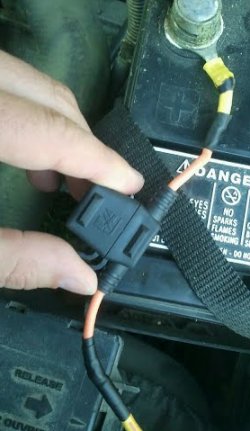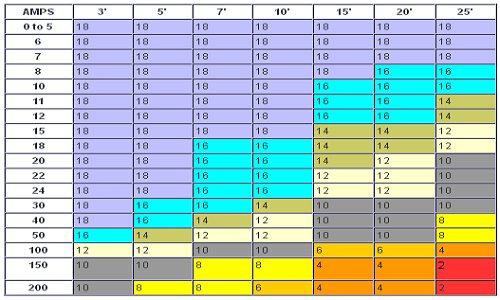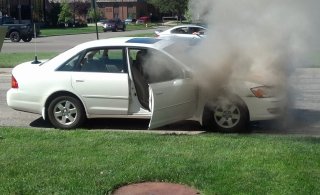Mobile Radio Installation Guide- The Fusible Link
Your mobile installation shouldn’t burn down your car, but it can! Some hams pay for a professional radio installation. If you’re a do-it-yourselfer then you should know about a simple, lifesaving technique. That fuse at your radio isn’t enough to protect you, your passengers and your car.
Contents
Fusible Link
Your new 2m / 70cm mobile transceiver may have two fuses, one on the red and another on the black wire. This is great for helping to protect your radio. This does very little in some critical circumstances to protect you, your radio, and your automobile.
A short occurring between that fuse and your car battery will still put you at risk. For example, a bit of insulation is scraped or compromised in some way, maybe even by heat, and the red positive voltage comes into contact with a grounded part of the vehicle, that wire can superheat between the contact point and battery. The heat generated will burn away more insulation, and could eventually cause an auto fire.
Directly at the battery connection is where the fusible link needs to be placed. To maximize your level of protection the fusible link should consist of two elements, wire the next gauge smaller than the rest of the wiring connection from the battery to the transceiver, and a fuse of adequate size.

15A Fuse Holder from NAPA Auto Parts
In this picture 10-gauge wire is used to carry voltage from the positive terminal of the car battery all the way to the transceiver in the cab. About a four inch section of the 10-gauge wire has been replaced with 12-gauge wire containing a fuse socket. Within the fuse socket is a 15-amp fuse.
Wire of smaller gauge in a specific section determines where the failure should occur if there is a short. However, the fuse should prevent any kind of short within reason. Never run wire directly from battery to radio without some kind of fusible link at the battery even if the radio has dual fuses on its own wiring harness.
More on the Fusible Link
This kind of fusible link offers two types of protection. The fuse serves as a link in your vehicle’s electrical system that can be broken under certain circumstances in order to protect your connected ham radio.
The fusible link is the "one size smaller" length of wire that acts much like a fuse, only it’s designed to protect against dangerous spikes that could cause a fire. This is because the failure point is determined by placement of the smaller gauge wire. You get to choose the failure point by where you place that link. The link serves to protect only that which comes after, so the closer to the voltage source the better.
The gauge (size of wire) used should be determined by what you intend on operating for a transceiver. For a typical 50w mobile VHF radio or even a 100w mobile HF transceiver you should not pull more than 15-amps when operating one at a time. For pulling up to 15-amps at 15 feet of wire length most automotive guides suggest that 14-gauge wire is sufficient. However, we want to make sure that the fuse blows before the wire fails. We can play it safe by running 10-guage wire to our transceiver, and using 12-gauge wire on our fusible link.
Wire Gauge Selection Table 12 Volt Circuit

Automotive Wire Gauge Selection (12 - 13.8v)
When selecting wire it is recommend that stranded copper be used. Stranded wire lowers the equivalent resistance when compared to solid and offers greater strength and flexibility.
As current flows through wire it produces some heat. The goal is to produce nominal heat as to prevent failure of the wiring insulation or start a fire. You can determine how much heat is produced as a function of Ohm’s Law.
P=I²R ( Power = Current ^2 * Resistance )
Using wiring of too small a gauge, such as trying to run 18-gauge wire to your 50w transceiver, not only causes the wire to produce dangerous heat, but also reduces the voltage to the radio. A voltage drop occurs at a certain current. That is directly derivative of Ohm's Law, V = I *R. At high current this can be bad for the transceiver, causing a voltage drop that may cause a malfunction. Being cheap and using that 18-gauge wire could kill your transceiver if it doesn’t burn down your car and kill you.
Credits and Resources
- I would like to thank Roger Burns KB0OGO for advising me on how not to burn my own car down when I was a new ham.
- Information from the ARRL on safely wiring a mobile transceiver
- NAPA auto parts store for the wire amp rating table

This ham operator may have wired his radio directly to the battery w/o a fusible link.